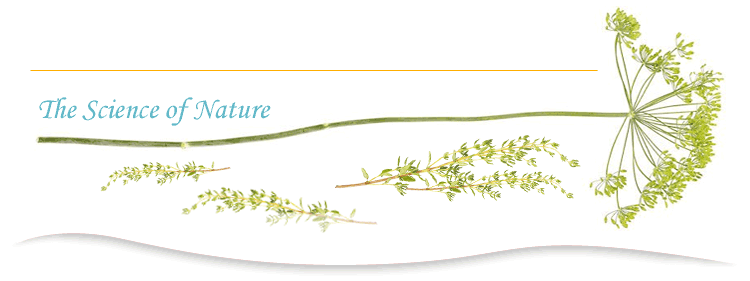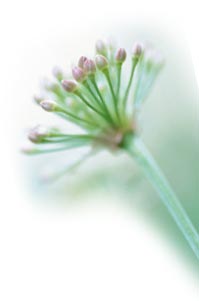

Isothiocyanates
Description
Isothiocyanates are a group of phytochemicals mainly found in cruciferous vegetables. The group contains different molecules that have various anticancer properties. Among them, benzylisothiocyanate phenylethylisothiocyanate, and 3-phenylpropylisothiocyanate appear to have the most potent anticancer properties.
Function
According to recent research, isothiocyanates appear to be responsible for the lowered risk of cancer associated with consumption of broccoli and other cruciferous vegetables. They seem to have neutralizing properties on carcinogenic substances.
Sources
Isothiocyanates are found in cruciferous vegetables such as broccoli, Brussels sprouts, cabbage, cauliflower, collards green, kale, watercress etc. They can also be provided as dietary supplements that contain extract of broccoli and other cruciferous vegetables.
Toxicity
None reported. The effects of supplements containing isothiocyanates during pregnancy and lactation are not known.
Important notice: please click here.
I want to learn more
Additional Sources of Information:
Scientific References
A critical review of the bioavailability of glucosinolates and related compounds. Holst B, Williamson G. Nat Prod Rep. 2004;21(3):425-447.
[Abstract]
A novel mechanism of chemoprotection by sulforaphane: inhibition of histone deacetylase. Myzak MC, Karplus PA, Chung FL, Dashwood RH. Cancer Res. 2004;64(16):5767-5774.
[Abstract]
A prospective study of cruciferous vegetables and prostate cancer. Giovannucci E, Rimm EB, Liu Y, Stampfer MJ, Willett WC. Cancer Epidemiol Biomarkers Prev. 2003;12(12):1403-1409.
[Abstract]
Brassica, biotransformation and cancer risk: genetic polymorphisms alter the preventive effects of cruciferous vegetables.. Lampe JW, Peterson S. J Nutr. 2002;132(10):2991-2994.
[Abstract]
Broccoli sprouts: an exceptionally rich source of inducers of enzymes that protect against chemical carcinogens. Fahey JW, Zhang Y, Talalay P. Proc Natl Acad Sci U S A. 1997;94(19):10367-10372.
[Abstract]
Cancer-preventive isothiocyanates: measurement of human exposure and mechanism of action. Zhang Y. Mutat Res. 2004;555(1-2):173-190.
[Abstract]
Cell death induction by isothiocyanates and their underlying molecular mechanisms. Nakamura Y, Miyoshi N. Biofactors. 2006;26(2):123-134.
[Abstract]
Cell-cycle dysregulation and anticancer therapy. Stewart ZA, Westfall MD, Pietenpol. JATrends Pharmacol Sci. 2003;24(3):139-145.
[Abstract]
Changes in glucosinolate concentrations, myrosinase activity, and production of metabolites of glucosinolates in cabbage (Brassica oleracea Var. capitata) cooked for different durations. Rungapamestry V, Duncan AJ, Fuller Z, Ratcliffe B. J Agric Food Chem. 2006;54(20):7628-7634.
[Abstract]
Chemoprevention by Isothiocyanates. Hecht SS. In: Kelloff GJ, Hawk ET, Sigman CC, eds. Promising Cancer Chemopreventive Agents, Volume 1: Cancer Chemopreventive Agents. Totowa, NJ: Humana Press; 2004:21-35.
Chemoprotective glucosinolates and isothiocyanates of broccoli sprouts: metabolism and excretion in humans. Shapiro TA, Fahey JW, Wade KL, Stephenson KK, Talalay P. Cancer Epidemiol Biomarkers Prev. 2001;10(5):501-508.
[Abstract]
Detoxification of electrophilic compounds by glutathione S-transferase catalysis: determinants of individual response to chemical carcinogens and chemotherapeutic drugs? Coles BF, Kadlubar FF. Biofactors. 2003;
17(1-4):115-130.
[Abstract]
Development of a food composition database for the estimation of dietary intakes of glucosinolates, the biologically active constituents of cruciferous vegetables. McNaughton SA, Marks GC. Br J Nutr. 2003;90(3):687-697.
[Abstract]
Dietary intake of isothiocyanates: evidence of a joint effect with glutathione S-transferase polymorphisms in lung cancer risk. Spitz MR, Duphorne CM, Detry MA, et al. Cancer Epidemiol Biomarkers Prev. 2000;9(10):1017-1020.
[Abstract]
Dietary intake of isothiocyanates: evidence of a joint effect with glutathione S-transferase polymorphisms in lung cancer risk. Lewis S, Brennan P, Nyberg F, et al. Re: Spitz, M. R., Duphorne, C. M., Detry, M. A., Pillow, P. C., Amos, C. I., Lei, L., de Andrade, M., Gu, X., Hong, W. K., and Wu, X. Cancer Epidemiol Biomarkers Prev. 2001;10(10):1105-1106.
[Abstract]
Dietary isothiocyanates, glutathione S-transferase -M1, -T1 polymorphisms and lung cancer risk among Chinese women in Singapore. Zhao B, Seow A, Lee EJ, et al. Cancer Epidemiol Biomarkers Prev. 2001;10(10):1063-1067.
[Abstract]
Dietary isothiocyanates, glutathione S-transferase polymorphisms and colorectal cancer risk in the Singapore Chinese Health Study. Seow A, Yuan JM, Sun CL, Van Den Berg D, Lee HP, Yu MC. Carcinogenesis. 2002;23(12):2055-2061.
[Abstract]
Direct evidence that sulfhydryl groups of Keap1 are the sensors regulating induction of phase 2 enzymes that protect against carcinogens and oxidants. Dinkova-Kostova AT, Holtzclaw WD, Cole RN, et al. Proc Natl Acad Sci U S A. 2002;99(18):11908-11913.
[Abstract]
Disposition of glucosinolates and sulforaphane in humans after ingestion of steamed and fresh broccoli. Conaway CC, Getahun SM, Liebes LL, et al. Nutr Cancer. 2000;38(2):168-178.
[Abstract]
Effect of cruciferous vegetables on lung cancer in patients stratified by genetic status: a mendelian randomisation approach. Brennan P, Hsu CC, Moullan N, et al. Lancet. 2005;366(9496):1558-1560.
[Abstract]
Effect of storage, processing and cooking on glucosinolate content of Brassica vegetables. Song L, Thornalley PJ. Food Chem Toxicol. 2007;45(2):216-224.
[Abstract]
Effects of consumption of Brussels sprouts on intestinal and lymphocytic glutathione S-transferases in humans. Nijhoff WA, Grubben MJ, Nagengast FM, et al. Carcinogenesis. 1995;16(9):2125-2128.
[Abstract]
Effects of consumption of brussels sprouts on plasma and urinary glutathione S-transferase class-alpha and -pi in humans. Nijhoff WA, Mulder TP, Verhagen H, van Poppel G, Peters WH. Carcinogenesis. 1995;16(4):955-957.
[Abstract]
Effects of watercress consumption on metabolism of a tobacco-specific lung carcinogen in smokers. Hecht SS, Chung FL, Richie JP, Jr., et al. Cancer Epidemiol Biomarkers Prev. 1995;4(8):877-884.
[Abstract]
Effects of watercress consumption on urinary metabolites of nicotine in smokers. Hecht SS, Carmella SG, Murphy SE. Cancer Epidemiol Biomarkers Prev. 1999;8(10):907-913.
[Abstract]
Efficacy of sulforaphane in eradicating Helicobacter pylori in human gastric xenografts implanted in nude mice. Haristoy X, Angioi-Duprez K, Duprez A, Lozniewski A. Antimicrob Agents Chemother. 2003;47(12):3982-3984.
[Abstract]
Epidemiological studies on brassica vegetables and cancer risk. Verhoeven DT, Goldbohm RA, van Poppel G, Verhagen H, van den Brandt PA. Cancer Epidemiol Biomarkers Prev. 1996;5(9):733-748.
[Abstract]
Fruit and vegetable intake and incidence of bladder cancer in a male prospective cohort. Michaud DS, Spiegelman D, Clinton SK, Rimm EB, Willett WC, Giovannucci EL. J Natl Cancer Inst. 1999;91(7):605-613.
[Abstract]
Glucosinolates and myrosinase activity in red cabbage (Brassica oleracea L. var. Capitata f. rubra DC.) after various microwave treatments. Verkerk R, Dekker M. J Agric Food Chem. 2004;52(24):7318-7323.
[Abstract]
Glucosinolates and their breakdown products in food and food plants. Fenwick GR, Heaney RK, Mullin WJ. Crit Rev Food Sci Nutr. 1983;18(2):123-201.
[Abstract]
Histone deacetylase inhibitors. Marks PA, Richon VM, Miller T, Kelly WK. Adv Cancer Res. 2004;91:137-168.
[Abstract]
Human metabolism and excretion of cancer chemoprotective glucosinolates and isothiocyanates of cruciferous vegetables. Shapiro TA, Fahey JW, Wade KL, Stephenson KK, Talalay P. Cancer Epidemiol Biomarkers Prev. 1998;7(12):1091-1100.
[Abstract]
Hydrolysis of glucosinolates to isothiocyanates after ingestion of raw or microwaved cabbage by human volunteers. Rouzaud G, Young SA, Duncan AJ. Cancer Epidemiol Biomarkers Prev. 2004;13(1):125-131.
[Abstract]
Inducers of Enzymes That Protect Against Carcinogens and Oxidants: Drug- and Food-Based Approaches with Dithiolethiones and Sulforaphane.Kensler TW, Talalay P. In: Kelloff GJ, Hawk ET, Sigman CC, eds. Promising Cancer Chemopreventive Agents, Volume 1: Cancer Chemopreventive Agents. Totowa, NJ: Humana Press; 2004:3-20.
Induction of histone acetylation and inhibition of growth of mouse erythroleukemia cells by S-allylmercaptocysteine. Lea MA, Rasheed M, Randolph VM, Khan F, Shareef A, desBordes C. Nutr Cancer. 2002;43(1):90-102.
[Abstract]
Inhibition of carcinogenesis by isothiocyanates. Hecht SS. Drug Metab Rev. 2000;32(3-4):395-411.
[Abstract]
Interplay between dietary inducers of GST and the GSTM-1 genotype in colon cancer. Slattery ML, Kampman E, Samowitz W, Caan BJ, Potter JD. Int J Cancer. 2000;87(5):728-733.
[Abstract]
Isothiocyanates as cancer chemopreventive agents: their biological activities and metabolism in rodents and humans. Conaway CC, Yang YM, Chung FL. Curr Drug Metab. 2002;3(3):233-255.
[Abstract]
Isothiocyanates, glutathione S-transferase M1 and T1 polymorphisms, and lung-cancer risk: a prospective study of men in Shanghai, China. London SJ, Yuan JM, Chung FL, et al. Lancet. 2000;356(9231):724-729.
[Abstract]
Mechanism-based in vitro screening of potential cancer chemopreventive agents. Gerhauser C, Klimo K, Heiss E, et al. Mutat Res. 2003;523-524:163-172.
[Abstract]
Mechanisms and applications of non-steroidal anti-inflammatory drugs in the chemoprevention of cancer. Steele VE, Hawk ET, Viner JL, Lubet RA. Mutat Res. 2003;523-524:137-144.
[Abstract]
Nuclear factor kappa B is a molecular target for sulforaphane-mediated anti-inflammatory mechanisms. Heiss E, Herhaus C, Klimo K, Bartsch H, Gerhauser C. J Biol Chem. 2001;276(34):32008-32015.
[Abstract]
Oral broccoli sprouts for the treatment of Helicobacter pylori infection: a preliminary report. Galan MV, Kishan AA, Silverman AL. Dig Dis Sci. 2004;49(7-8):1088-1090.
[Abstract]
Persistent infection with Helicobacter pylori and the development of gastric cancer. Normark S, Nilsson C, Normark BH, Hornef MW. Adv Cancer Res. 2003;90:63-89.
[Abstract]
Prospective study of fruit and vegetable consumption and risk of lung cancer among men and women. Feskanich D, Ziegler RG, Michaud DS, et al. J Natl Cancer Inst. 2000;92(22):1812-1823.
[Abstract]
Role of histone deacetylase inhibitors in the treatment of cancer (Review). Mei S, Ho AD, Mahlknecht U. Int J Oncol. 2004;25(6):1509-1519.
[Abstract]
Sulforaphane as a promising molecule for fighting cancer. Fimognari C, Hrelia P. Mutat Res. 2007;635(2-3):90-104.
[Abstract]
Sulforaphane induces cell type-specific apoptosis in human breast cancer cell lines. Pledgie-Tracy A, Sobolewski MD, Davidson NE. Mol Cancer Ther. 2007;6(3):1013-1021.
[Abstract]
Sulforaphane inhibits extracellular, intracellular, and antibiotic-resistant strains of Helicobacter pylori and prevents benzo[a]pyrene-induced stomach tumors. Fahey JW, Haristoy X, Dolan PM, et al. Proc Natl Acad Sci U S A. 2002;99(11):7610-7615.
[Abstract]
Sulforaphane inhibits histone deacetylase activity in BPH-1, LnCaP and PC-3 prostate epithelial cells. Myzak MC, Hardin K, Wang R, Dashwood RH, Ho E. Carcinogenesis. 2006;27(4):811-819.
[Abstract]
Sulforaphane retards the growth of human PC-3 xenografts and inhibits HDAC activity in human subjects. Myzak MC, Tong P, Dashwood WM, Dashwood RH, Ho E. Exp Biol Med (Maywood). 2007;232(2):227-234.
[Abstract]
The chemical diversity and distribution of glucosinolates and isothiocyanates among plants. Fahey JW, Zalcmann AT, Talalay P. Phytochemistry. 2001;56(1):5-51.
[Abstract]
Total isothiocyanate contents in cooked vegetables frequently consumed in Singapore. Jiao D, Yu MC, Hankin JH, Low SH, Chung FL. J Agric Food Chem. 1998;46(3):1055-1058.
Urinary excretion of dithiocarbamates and self-reported Cruciferous vegetable intake: application of the 'method of triads' to a food-specific biomarker. Fowke JH, Hebert JR, Fahey JW. Public Health Nutr. 2002;5(6):791-799.
[Abstract]
Urinary excretion of total isothiocyanates from cruciferous vegetables shows high dose-response relationship and may be a useful biomarker for isothiocyanate exposure. Kristensen M, Krogholm KS, Frederiksen H, Bugel SH, Rasmussen SE. Eur J Nutr. 2007;46(7):377-382.
[Abstract]
Urinary isothiocyanate excretion, brassica consumption, and gene polymorphisms among women living in Shanghai, China. Fowke JH, Shu XO, Dai Q, et al. Cancer Epidemiol Biomarkers Prev. 2003;12(12):1536-1539.
[Abstract]
Urinary total isothiocyanate (ITC) in a population-based sample of middle-aged and older Chinese in Singapore: relationship with dietary total ITC and glutathione S-transferase M1/T1/P1 genotypes. Seow A, Shi CY, Chung FL, et al. Cancer Epidemiol Biomarkers Prev. 1998;7(9):775-781.
[Abstract]
Vegetable, fruit and meat consumption and potential risk modifying genes in relation to colorectal cancer. Turner F, Smith G, Sachse C, et al. Int J Cancer. 2004;112(2):259-264.
[Abstract]
Vegetable-derived isothiocyanates: anti-proliferative activity and mechanism of action. Zhang Y, Yao S, Li J. Proc Nutr Soc. 2006;65(1):68-75.
[Abstract]